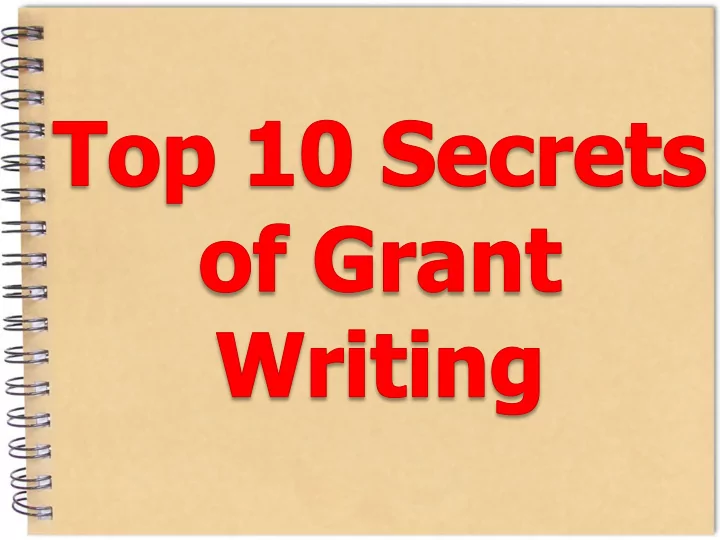

Why is it so painful? • It’s going to require a significant time commitment. • The odds are daunting, so it’s easy to succumb to serious bouts of self-doubt. • You’ll have to face your project and step back from it. • But no matter what the outcome, it will be worth it.
Study the grant website to determine • Eligibility • Due dates • Previous winners • Previous winning proposals • What issues you need to address in the proposal • Questions? Talk to the program administer, they even will give tips.
Two main strategies • 1. Situate your project in the context of work on this topic.
• The pictorial worlds created by 15 th and 16 th century Netherlandish artists often extended beyond one panel to inhabit three separate panels hinged together, a format we today call the triptych. But despite its popularity at the time – and its use in such canonical works as Campin’s Mérode triptych and Bosch’s Garden of Earthly Delights , the triptych has been the subject of surprisingly little scholarly attention. The few books written on the topic are largely out-of-date. Klaus Lankheit’s Das Triptychon als Pathosformel , which was published in 1959, draws on the methodology of Aby Warburg; and the best known book on the topic, Shirley Blum’s Early Netherlandish Triptychs: A Study in Patronage appeared in 1969 and in highly indebted to the interpretive approach of Erwin Panofsky. The time is ripe, then, for a consideration of the triptych that takes into account current methodologies in the field.
• 2. Discuss and motivate the topic more generally. • If you follow this strategy, be sure that you motivate your specific topic, not something generally related to it.
Simple and direct • My book proposal, Opening Doors: The Early Netherlandish Triptych Reinterpreted , considers how the triptych format could serve as a vehicle for structuring and generating meaning within Netherlandish painting of the fifteenth and sixteenth centuries.
Not simple and direct • My study will argue that the syntax of the triptych – its tripartite format (or structure) and its dual views (opened vs. closed) – yields semantic content – that is, distinctions and connections between the scenes depicted in the various parts. That individual syntactic/semantic units generate a meaning for the whole is captured in the book’s title, Whole in the Whole, Whole in the Parts , a phrase whose derivation from the metaphysical theology of transubstantiation alludes to the triptych’s religious functions as well.
• Readers reviewing your proposal want to see what the results of the project will be, not a list of the topics you will consider. • This is a reason why more mature projects often do better.
Keep in mind • This does not simply mean to make the project sound interesting. • This does not simply mean to argue that no one has ever treated this topic – or that no one has ever treated it the way you do. • You have to make the case that you are making a real contribution to the field – and not just a very small area within the field.
Too much big picture • Suggests to the readers that you haven’t figured out what the actual results of the project will be.
Too much specific detail • Will drive your readers mad. • The section where you go through the chapters of your book (or sections of your essay) is where the specifics should surely come in. But don’t overdo it even here.
This can include things, such as.. • Conference papers presented on the topic • Previous articles published (written) on the topic • Publishing commitments or possibilities for this project • Relation of this project to an earlier project you completed. • Skills in world languages, working in archives, etc. relevant to the project
Keep in mind: • People handing out money want to feel it’s going to go to good use and that you will actually finish the project.
GOOD LESS GOOD Famous specialist in your Colleague who works next sub-field door. Someone who knows your Someone who thinks work well and can write you’re a really nice in detail about its value. person, but never got around to reading your proposal.
Be nice to your references • Give them plenty of time • Show them your proposal well in advance • Give them a chance to have input into your proposal • Be clear about the deadlines • Enter them onto the on-line forms first thing. • Show that you appreciate the time and effort it takes to write these letters. • Tell them the outcome (even if bad) and thank them once more (regardless of the outcome).
It’s not over until it’s over; if you lose… • If possible, get back comments from the readers • Go back and look over who won and if possible, read their proposals (you can even email them and ask if it’s not posted) • Keep refining your proposal • My mantra: the third time’s the charm
Recommend
More recommend